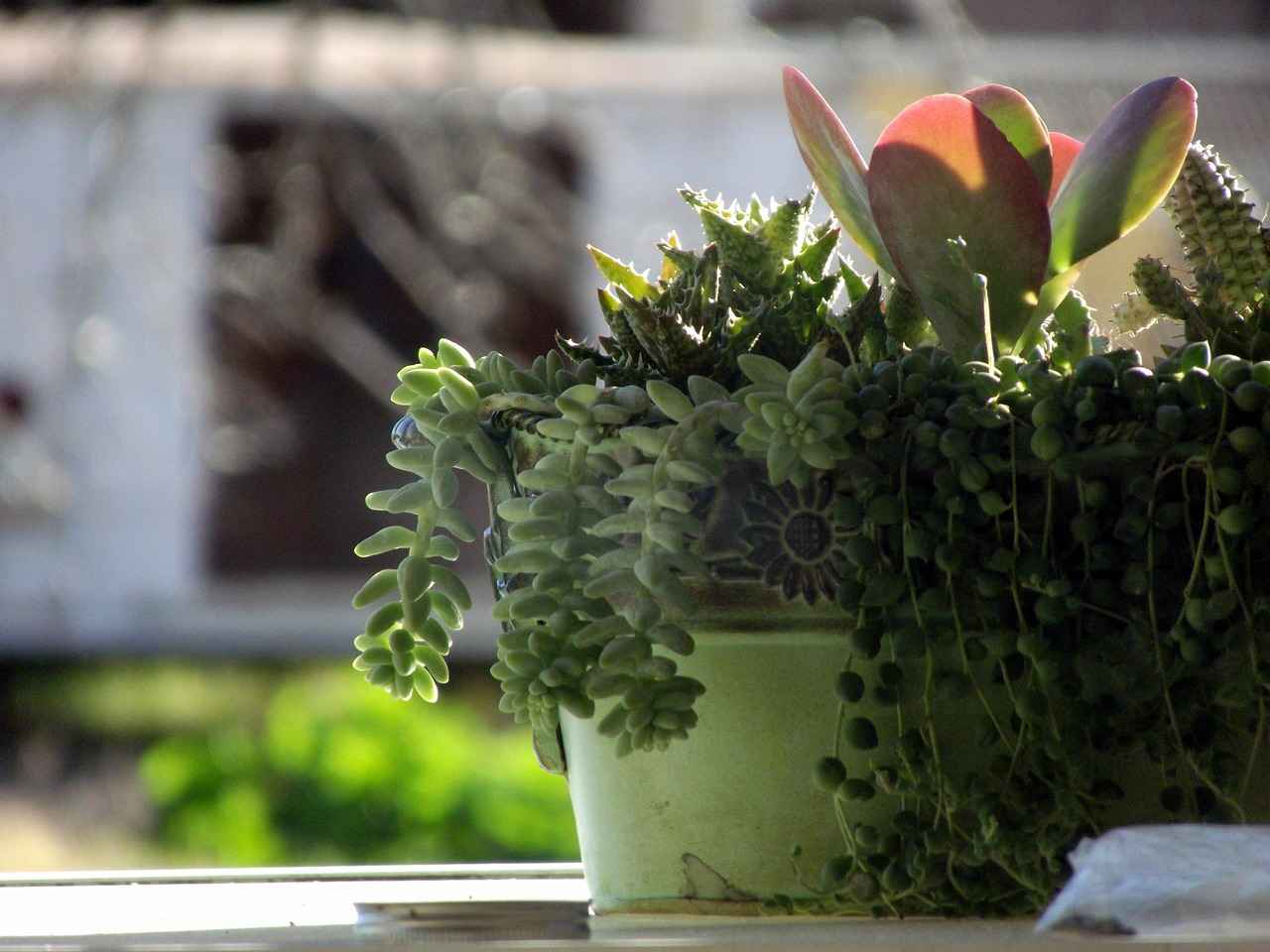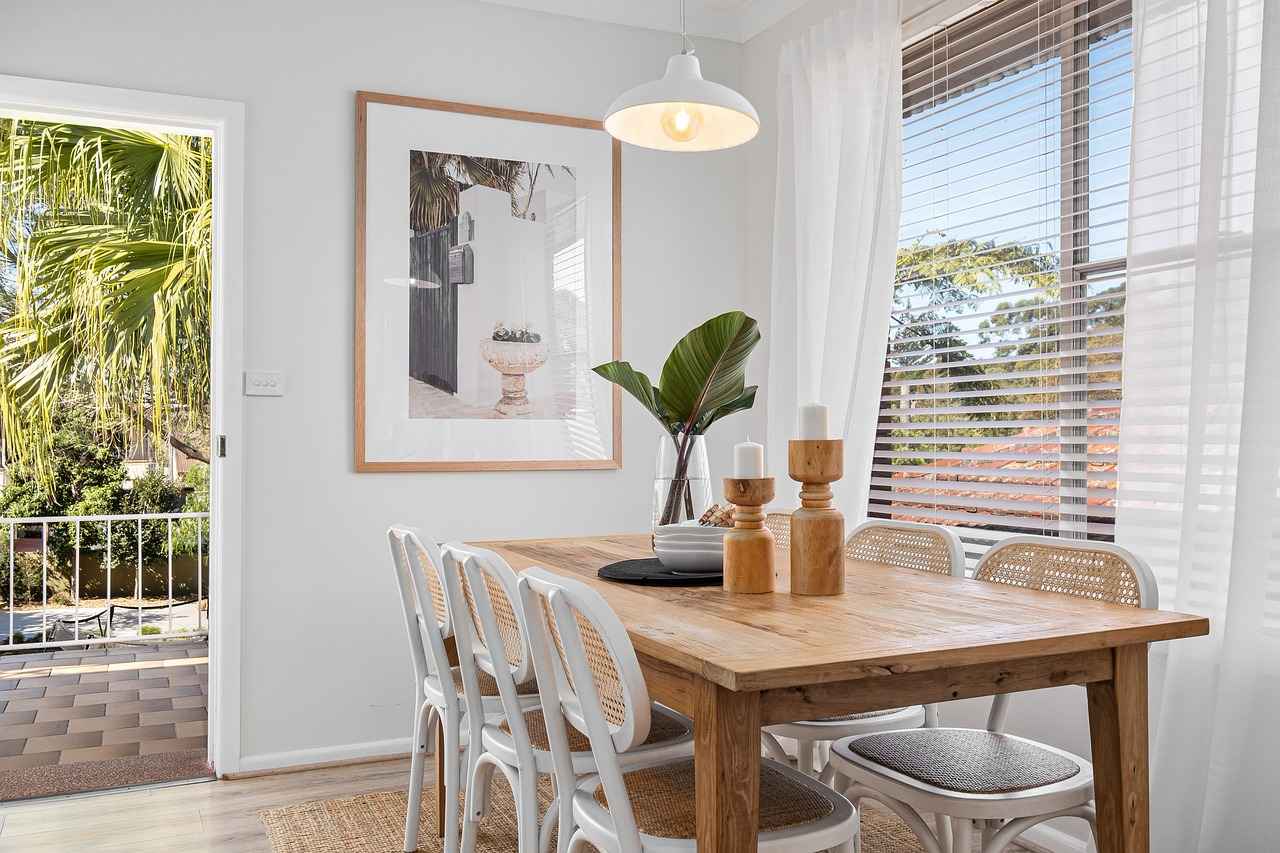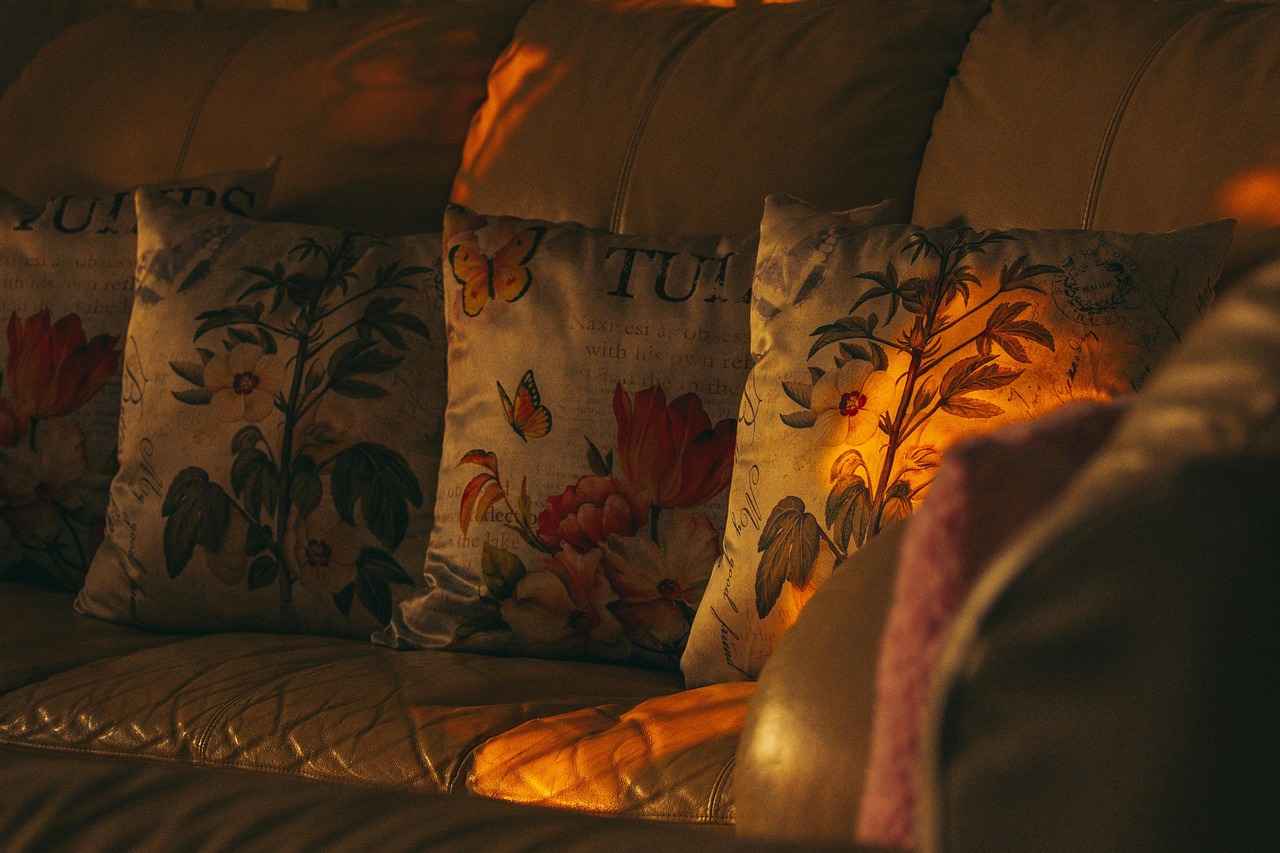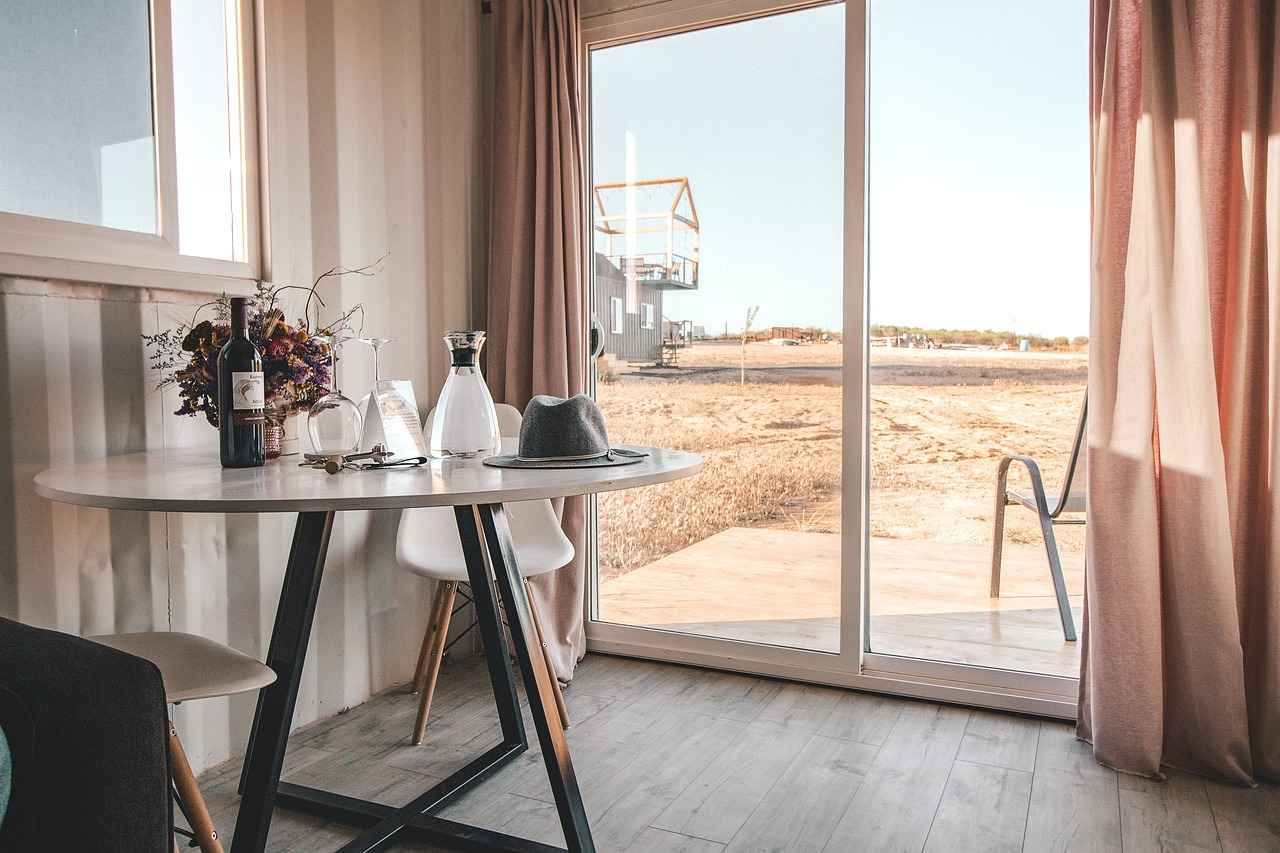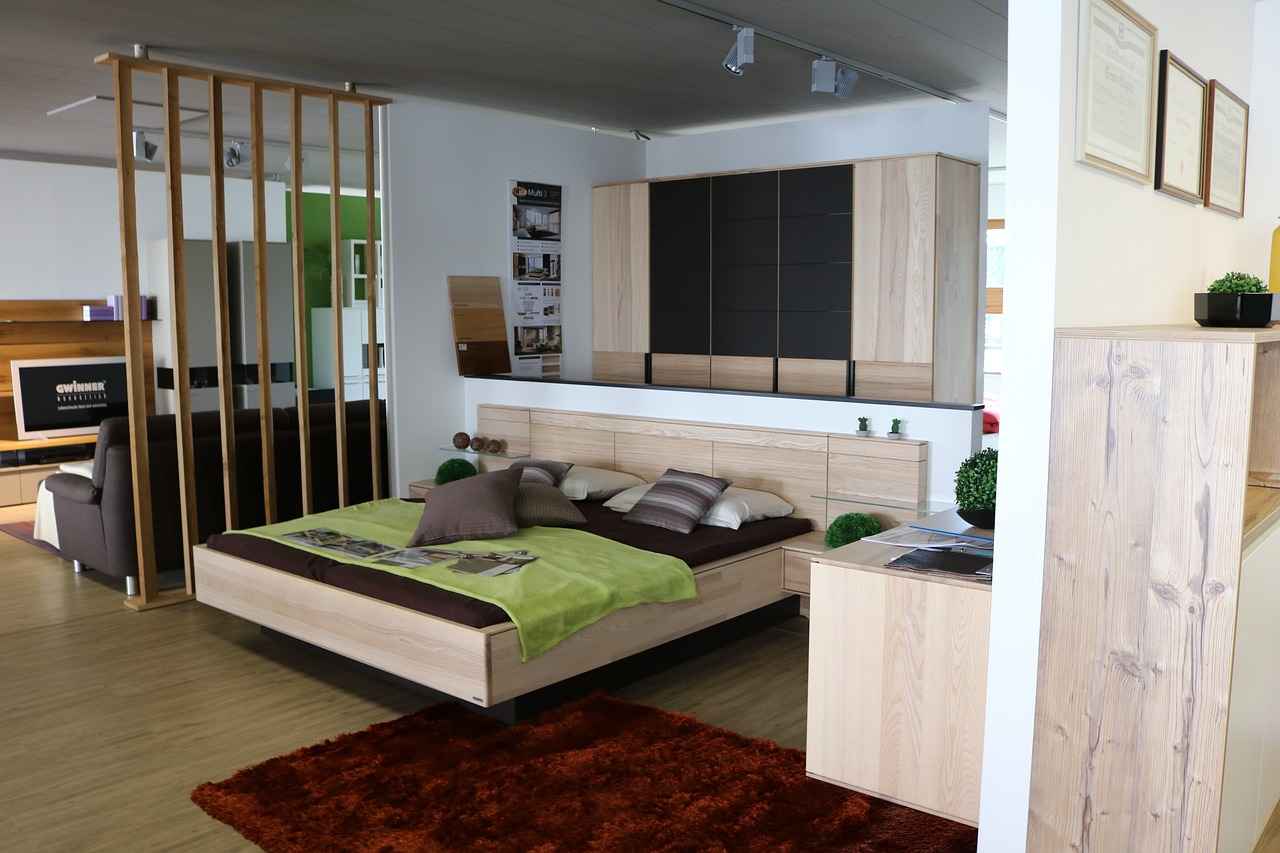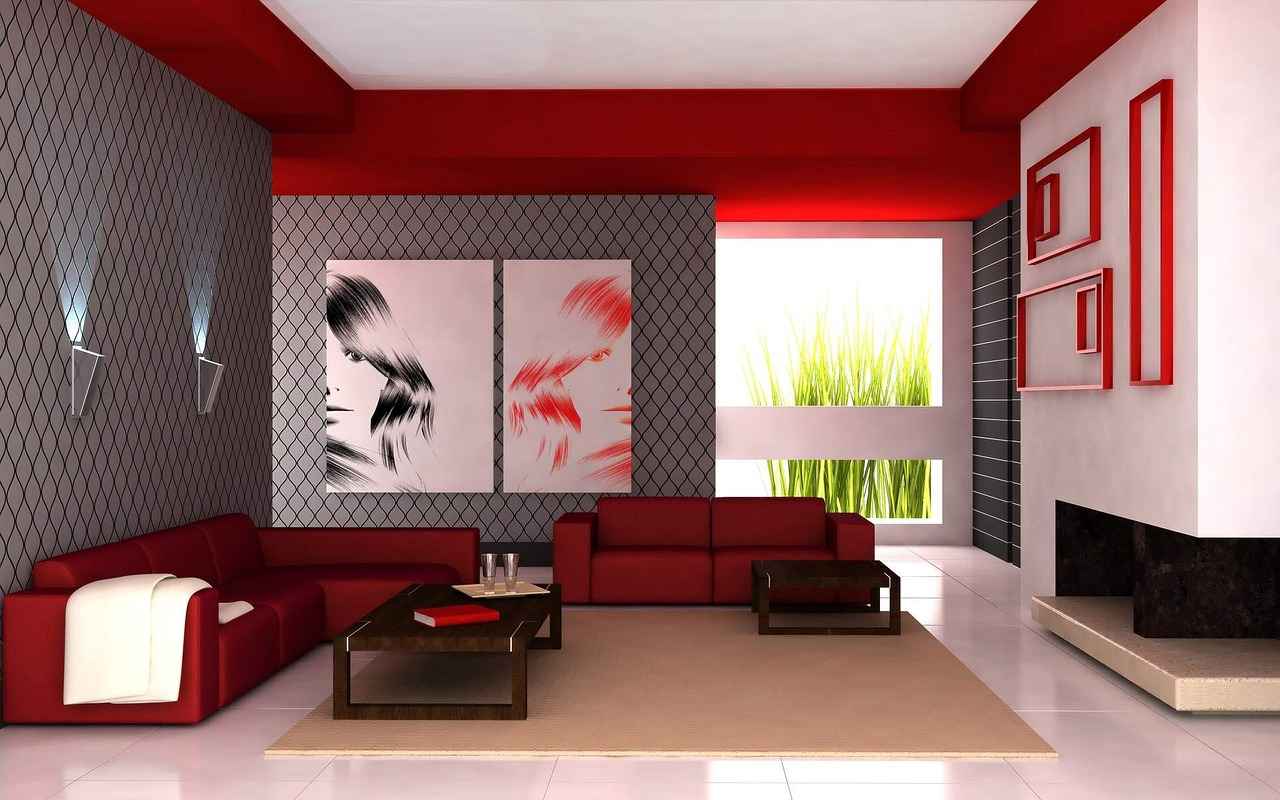This article explores the innovative use of houseplants as natural room dividers, enhancing both aesthetics and functionality in your living space while promoting a greener lifestyle.
Houseplants provide a unique aesthetic appeal and help improve air quality, making them an excellent choice for natural room dividers. They add vibrancy and a touch of nature indoors, creating an inviting atmosphere. In addition to their beauty, plants can also help reduce noise levels, making your home feel more serene.
Selecting the right plants is crucial for effective room division. Some plants thrive in various light conditions and can grow tall enough to create visual barriers. Here are some popular options:
- Ficus Trees: Ficus trees, such as the Fiddle Leaf Fig, are favored for their height and lush foliage, making them ideal for larger spaces.
- Snake Plants: Known for their low maintenance, snake plants have an upright growth pattern that enhances privacy in narrow spaces.
- Peace Lilies: These beautiful plants not only look good but also help purify the air, making them a great choice for indoors.
Strategic placement of plants can enhance their effectiveness as dividers. Consider factors like light exposure and the room’s layout when arranging your plants. Here are some tips:
Using plants of varying heights can create a more dynamic and visually interesting divider. Taller plants should be placed at the back, with shorter ones in front.
Grouping plants together can create a more substantial visual barrier. Use similar pots or colors to unify the look while maintaining diversity in plant types.
Utilizing plants as room dividers offers numerous benefits, including improved air quality, enhanced aesthetics, and a natural way to define spaces without permanent structures. Additionally, they can foster a sense of well-being and reduce stress.
Many houseplants are known for their air-purifying qualities, which can help reduce indoor pollutants and create a healthier living environment. According to NASA’s Clean Air Study, several plants effectively remove toxins like formaldehyde and benzene.
Certain plants can increase humidity levels, which can be particularly beneficial in dry environments. This can lead to improved comfort and health for inhabitants.
Regular maintenance is essential to keep houseplants healthy and thriving as dividers. Understanding each plant’s specific needs will ensure their longevity and effectiveness. Here are some maintenance tips:
Proper watering and fertilizing routines are crucial for plant health. Overwatering can be detrimental, so knowing each plant’s requirements is essential for success.
Regular pruning helps maintain the desired shape and size of your plants, ensuring they remain effective as dividers while promoting healthy growth.
Even in smaller areas, houseplants can serve as effective dividers, creating privacy and visual interest without overwhelming the space. Here are some ideas:
Hanging planters can create vertical barriers, making them perfect for small rooms where floor space is limited while still providing the benefits of greenery.
Consider using wheeled plant stands to create mobile dividers that can be easily rearranged. This flexibility allows for dynamic room layouts and adaptability.
Incorporating plants as dividers can significantly enhance the overall aesthetic of your home, contributing to a more inviting and tranquil atmosphere. Choosing the right pots and stands that complement your decor can elevate the look of your plants, making them not just dividers but also stylish decor elements.
Consider the colors and textures of the plants and their pots to create a harmonious look that ties together your interior design theme. This attention to detail can transform your space into a cohesive and visually appealing environment.

Why Choose Houseplants for Room Dividers?
Houseplants have become increasingly popular in modern interior design, not only for their aesthetic appeal but also for their numerous benefits. Using houseplants as natural room dividers is an innovative way to enhance your living space. They provide a unique aesthetic appeal and can significantly improve air quality, making them an excellent choice for those looking to create a more inviting and healthier environment.
When incorporating houseplants as dividers, you not only add a touch of nature to your home but also create a sense of tranquility and comfort. The vibrant greens of the plants can introduce life into any room, breaking up the monotony of walls and furniture. This method of division allows for flexibility in defining spaces without the permanence of traditional dividers.
- Improved Air Quality: Many houseplants are known for their air-purifying properties, effectively removing toxins from the air and promoting a healthier indoor environment.
- Enhanced Aesthetic Appeal: Plants can soften hard edges and create a more inviting atmosphere, making your space feel more relaxed and welcoming.
- Natural Sound Barrier: Foliage can help absorb sound, providing a quieter environment, especially in open-plan spaces.
- Increased Humidity: Plants release moisture into the air through a process called transpiration, which can help maintain comfortable humidity levels in your home.
Not all plants are suitable for use as room dividers. When selecting houseplants, consider their height, growth habits, and light requirements. Here are some plant types that work exceptionally well:
- Ficus Trees: Known for their impressive height and lush leaves, Ficus trees like the Fiddle Leaf Fig can create a stunning visual barrier.
- Snake Plants: These low-maintenance plants thrive in various light conditions and grow tall, making them perfect for narrow spaces.
- Palms: Indoor palms, such as the Areca or Bamboo palm, provide a tropical feel and can grow quite tall, effectively dividing spaces.
- Pothos: This trailing plant can be used in hanging arrangements or on shelves to create a layered look.
Placement is key when using houseplants as dividers. Here are some tips for maximizing their impact:
- Create Layered Heights: Use plants of varying heights to create depth and visual interest. Taller plants should be positioned at the back, while shorter ones can be placed in front.
- Group Similar Plants: Grouping plants together can create a more substantial visual barrier. Use pots that match or complement each other for a cohesive look.
- Consider Light Exposure: Ensure that all plants receive adequate light by placing them in areas that suit their specific needs.
In conclusion, houseplants serve as beautiful and functional natural room dividers that can enhance the aesthetic and air quality of your living space. By choosing the right plants and arranging them strategically, you can create a vibrant and inviting atmosphere that promotes both comfort and health.
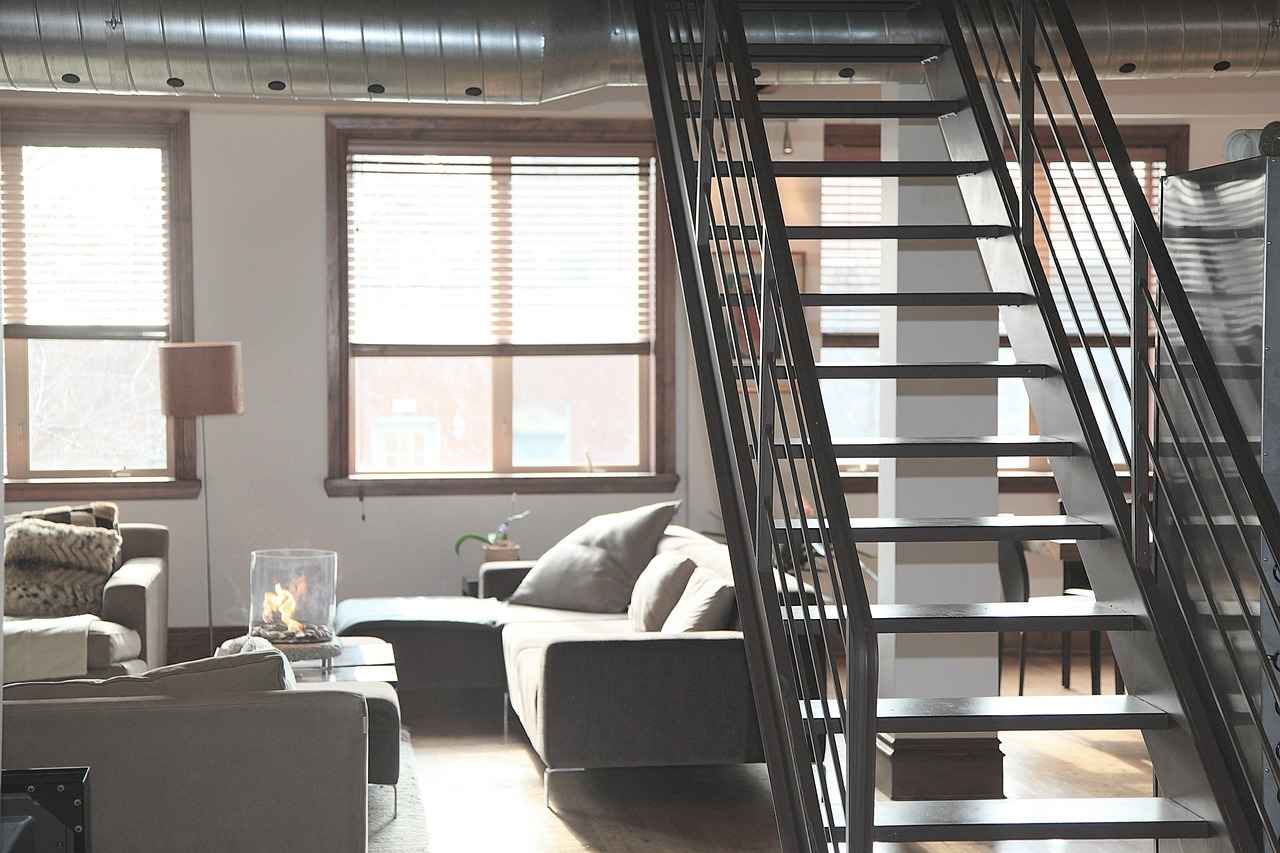
What Types of Houseplants Work Best?
When it comes to utilizing houseplants as natural room dividers, selecting the right plants is essential for achieving both functionality and aesthetic appeal. The ideal plants not only provide visual barriers but also thrive in various lighting conditions, ensuring they flourish in your indoor environment.
Choosing houseplants that serve as effective dividers requires careful consideration of their growth habits, light preferences, and maintenance needs. Here are some top contenders:
- Ficus Trees: Known for their impressive height and dense foliage, Ficus trees, such as the Fiddle Leaf Fig, are perfect for creating natural partitions in larger spaces. Their broad leaves can block sightlines effectively while adding a touch of elegance to your decor.
- Snake Plants: With their striking vertical growth, Snake plants are incredibly low maintenance and thrive in a range of lighting conditions. Their ability to grow tall makes them suitable for narrow spaces, providing an effective privacy screen without overwhelming the area.
- Pothos: This versatile plant is celebrated for its trailing vines and adaptability. Pothos can be placed on shelves or in hanging planters, allowing it to cascade down and create a soft, natural barrier that enhances any room’s ambiance.
- ZZ Plant: The ZZ plant is another excellent choice due to its resilience and ability to thrive in low-light conditions. Its shiny leaves add a touch of sophistication, making it a stylish option for dividing spaces.
- Rubber Plant: With its large, glossy leaves, the Rubber plant can grow quite tall, making it an excellent choice for a dramatic room divider. It thrives in bright, indirect light and can adapt to various conditions, making it a favorite among plant enthusiasts.
In addition to these popular options, consider the following factors when selecting houseplants for room division:
- Light Requirements: Assess the natural light available in your space. Some plants prefer bright, indirect light, while others can thrive in low-light conditions. Choose accordingly to ensure your plants remain healthy and vibrant.
- Growth Habit: Look for plants with upright or bushy growth habits, as these will provide the most effective visual barriers. Avoid plants that tend to sprawl or require extensive pruning to maintain their shape.
- Maintenance Needs: Select plants that align with your care preferences. If you prefer low-maintenance options, consider plants like Snake plants or ZZ plants that require minimal attention.
By carefully selecting houseplants that meet these criteria, you can create beautiful and functional room dividers that enhance your living space. Not only do these plants serve as natural barriers, but they also contribute to improved air quality and a more inviting atmosphere.
In summary, the right choice of houseplants can transform your home, providing both privacy and a touch of nature. Whether you opt for the towering Ficus or the elegant Pothos, each plant brings its unique charm and benefits, making your space feel more connected to the natural world.
Ficus Trees: A Classic Choice
When it comes to enhancing interior spaces, Ficus trees, particularly the Fiddle Leaf Fig, have become a favorite among homeowners and interior designers alike. Their impressive height and lush, broad leaves not only add a touch of nature indoors but also serve practical purposes in home decor.
Ficus trees are known for their ability to create a sense of separation in larger spaces without the need for permanent structures. Their natural form allows them to act as living partitions, providing both visual and acoustic privacy. Additionally, they contribute to improved air quality, making them a dual-purpose choice for any room.
- Height: Ficus trees can grow several feet tall, making them ideal for creating a substantial visual barrier.
- Foliage: Their broad leaves offer a dense canopy, enhancing the feeling of separation.
- Adaptability: Ficus trees can thrive in various lighting conditions, from bright indirect light to lower light settings.
Strategically placing Ficus trees can significantly impact the overall aesthetic and functionality of a room. Here are some tips:
- Placement: Position your Ficus tree near areas that require division, such as separating a living room from a dining area.
- Layering: Combine different plant heights to create a more dynamic visual effect. Taller Ficus trees can be placed at the back, with smaller plants in front.
- Grouping: Place multiple Ficus trees together to form a more substantial divider, enhancing the feeling of enclosure.
To keep your Ficus tree healthy and thriving, it’s essential to understand its care needs:
- Watering: Ficus trees prefer to dry out slightly between waterings. Overwatering can lead to root rot.
- Lighting: While they can tolerate lower light, they flourish in bright, indirect sunlight.
- Fertilizing: During the growing season, a balanced fertilizer can help promote healthy growth.
Incorporating Ficus trees as natural dividers offers several benefits:
- Improved Air Quality: Ficus trees are known to purify the air by removing toxins, contributing to a healthier living environment.
- Aesthetic Appeal: They add a vibrant, organic touch to any decor, making spaces feel more inviting.
- Flexibility: Unlike traditional dividers, Ficus trees can be moved and rearranged as needed, allowing for a dynamic living space.
Ficus trees, especially the Fiddle Leaf Fig, are a classic choice for anyone looking to enhance their interior spaces. Their combination of height, aesthetic appeal, and air-purifying qualities makes them an ideal solution for creating natural room dividers. By understanding their care requirements and strategic placement, you can enjoy the many benefits these beautiful trees offer.
Snake Plants: Low Maintenance and Stylish
Snake Plants are a popular choice among indoor plant enthusiasts, not just for their striking appearance but also for their minimal care requirements. Known scientifically as Sansevieria, these plants thrive in a variety of conditions, making them perfect for both novice and experienced plant owners alike.
One of the most appealing aspects of snake plants is their upright growth pattern. This characteristic allows them to fit seamlessly into narrow spaces, such as hallways or corners, without taking up too much room. Their tall, architectural leaves can create a sense of privacy, making them an excellent choice for open-concept living areas where you want to define different spaces without erecting physical barriers.
- Air Purification: Snake plants are known for their ability to filter indoor air pollutants, contributing to a healthier living environment.
- Low Light Tolerance: They can thrive in low-light conditions, making them suitable for areas that don’t receive direct sunlight.
- Water Efficiency: Snake plants require infrequent watering, as they store moisture in their leaves, making them drought-resistant.
Despite their low maintenance nature, snake plants do require some care to thrive:
- Watering: Allow the soil to dry out completely between waterings. Overwatering can lead to root rot.
- Light Conditions: While they prefer indirect sunlight, snake plants can adapt to various light conditions, from bright to low light.
- Fertilizing: Use a balanced fertilizer during the growing season (spring and summer) for optimal growth.
Incorporating snake plants into your decor can enhance the overall aesthetic of your home:
- Pot Selection: Choose pots that complement your interior design style. Sleek, modern pots can accentuate the plant’s architectural form.
- Grouping: Consider grouping snake plants with other houseplants to create a vibrant display that adds depth and texture to your space.
Utilizing snake plants as natural room dividers is an innovative way to enhance your living space:
- Strategic Placement: Position taller snake plants at the back and shorter plants in front to create a layered look.
- Mobile Dividers: Use wheeled plant stands to easily rearrange your snake plants, adapting to your needs as your space changes.
In summary, snake plants are not just a trendy addition to your home; their low maintenance nature, air-purifying qualities, and aesthetic appeal make them an ideal choice for anyone looking to enhance their living space. Whether used as a standalone statement piece or as part of a larger arrangement, snake plants offer versatility and beauty that can transform any room.

How to Arrange Houseplants for Maximum Impact?
Arranging houseplants effectively can transform your living space, not just by enhancing aesthetics but also by improving functionality. The strategic placement of plants can significantly enhance their effectiveness as natural dividers. To achieve the best results, it is essential to consider various factors, including light exposure and the layout of the room.
Different plants have varying light requirements, which can impact their growth and overall health. When arranging your plants, assess the amount of natural light each area receives:
- Bright, indirect light: Ideal for plants like Fiddle Leaf Figs and Rubber Plants.
- Low light: Perfect for Snake Plants and Pothos, which can thrive in shaded areas.
- Direct sunlight: Great for succulents and cacti that require more intense light exposure.
By placing plants in areas that match their light needs, you ensure they remain healthy and vibrant, maximizing their effectiveness as dividers.
The layout of your room plays a crucial role in how plants function as dividers. Here are some tips for optimal arrangement:
- Define Spaces: Use taller plants to create a sense of separation between different areas of the room, such as a living area and a workspace.
- Flow and Accessibility: Ensure that the arrangement allows for easy movement throughout the space. Avoid placing plants in high-traffic areas where they could be knocked over.
- Visual Balance: Distribute plants evenly throughout the room to create a balanced look. This can be achieved by grouping plants of varying heights and sizes.
Utilizing plants of different heights can add depth and interest to your space. Here’s how to achieve a layered effect:
- Tall Plants: Position taller plants, such as Ficus Trees, at the back or center of the arrangement.
- Medium Plants: Place medium-height plants like ZZ Plants in front of the taller ones to create a gradual transition.
- Short Plants: Use smaller plants, such as Spider Plants or decorative herbs, at the front to add a lush, green foreground.
Group plants together to create a more substantial visual barrier. Here are some tips for effective grouping:
- Similar Pots: Use pots of similar colors or materials to unify the look while allowing for diversity in plant types.
- Contrasting Textures: Mix plants with different leaf shapes and textures to create visual interest while maintaining a cohesive theme.
- Height Variation: As previously mentioned, varying heights within the group can enhance the overall impact of the arrangement.
Incorporating accessories can further enhance the effectiveness of your plant arrangements:
- Plant Stands: Use stands to elevate certain plants, allowing for better visibility and creating additional layers.
- Hanging Planters: These can be used to add greenery at eye level or above, making use of vertical space and creating a more enclosed feeling.
- Decorative Screens: Consider using decorative plant screens that can complement your plants while providing additional structure to the space.
In summary, the strategic arrangement of houseplants can significantly enhance their role as natural dividers in your home. By considering light exposure, room layout, and employing various grouping techniques, you can create an inviting and functional environment that showcases the beauty of nature while improving your indoor air quality.
Creating Layered Heights
When designing a space, the arrangement of houseplants can significantly influence the overall ambiance. with plants not only enhances visual appeal but also adds depth and dimension to your interior design. By thoughtfully placing taller plants at the back and shorter ones in front, you can craft a stunning natural divider that draws the eye and invites exploration.
Layering plants of varying heights is a technique that can transform a mundane corner into a vibrant focal point. This method allows for dynamic visual interest, creating a sense of movement and flow within the space. The contrast between tall and short plants also helps to define areas without the need for physical barriers, making it an effective way to separate functional zones in an open-plan layout.
When selecting plants for a layered arrangement, consider their growth habits and light requirements. Some excellent options include:
- Fiddle Leaf Fig: Known for its large leaves and height, it serves as a striking backdrop.
- ZZ Plant: This hardy plant has a compact form, making it perfect for the front row.
- Pothos: With its trailing vines, it can drape beautifully over the edges of pots, adding softness.
The arrangement of plants is crucial for achieving the desired effect. Here are some tips:
- Start with a Focal Point: Place your tallest plant in the center or back of the arrangement to draw attention.
- Vary Leaf Shapes and Textures: Mixing plants with different leaf shapes and textures adds complexity and interest.
- Consider Color Coordination: Use plants with complementary colors to create a cohesive look that ties the space together.
In addition to plant heights, accessories can also enhance the layered effect. Using plant stands can elevate shorter plants, allowing them to be seen above taller ones, while decorative pots can add a splash of color or texture. Consider using:
- Woven Baskets: These can provide a rustic touch while allowing for height variation.
- Metal Stands: Sleek and modern, they can complement contemporary decor.
To ensure your layered arrangement remains healthy and attractive, regular maintenance is essential:
- Watering: Keep in mind that taller plants may require different watering than shorter ones due to varying root depths.
- Pruning: Regularly prune to maintain shape and encourage growth, ensuring that no plant overshadows another.
- Fertilizing: Use an appropriate fertilizer to support the growth of all plants in your arrangement.
By incorporating the technique of creating layered heights with houseplants, you can achieve a stunning and functional natural divider. This approach not only enhances the aesthetic of your space but also promotes a sense of tranquility and connection to nature. With careful selection and arrangement, your indoor garden can serve as a beautiful backdrop that elevates your home’s ambiance.
Grouping Plants for a Cohesive Look
When it comes to creating an inviting and functional living space, grouping plants together serves as a powerful design strategy. Not only does it enhance the visual appeal of your room, but it also helps in creating a more substantial visual barrier, effectively dividing space without the need for permanent structures. This technique allows you to combine various plant types while maintaining a cohesive aesthetic.
Grouping plants can significantly impact the overall look of your space. By using plants of similar pots or colors, you can achieve a unified appearance that ties different elements of your decor together. This method also allows for diversity in plant types, which can create a more dynamic and engaging environment. For instance, you might choose to cluster a tall Ficus tree with shorter succulents in pots of the same color to create a striking focal point.
The choice of pots plays a crucial role in how grouped plants are perceived. Using pots that share a similar design or color can create a sense of harmony. For example, matte black pots can provide a sleek, modern look, while terracotta pots can evoke a rustic charm. Consider the style of your room when selecting pots to ensure they complement your overall decor.
While uniformity in pots is essential, it’s equally important to maintain diversity in plant types. Different plants can bring varying textures, shapes, and colors into the mix, making the arrangement visually interesting. For example, pairing a Snake plant with vibrant Fern can create a striking contrast. This diversity not only enhances aesthetics but also contributes to a healthier indoor environment as different plants can purify the air in unique ways.
Another effective strategy is to create layers by placing taller plants at the back and shorter ones in front. This arrangement not only adds depth but also ensures that each plant is visible, maximizing the visual impact. For instance, a tall Dracaena can serve as a backdrop for a collection of smaller pothos or peace lilies, creating a lush, inviting barrier.
Consider the layout of your room when grouping plants. Placing them near natural light sources can enhance their growth and vibrancy. Additionally, think about the flow of the space; grouping plants in a way that guides the eye can create a more cohesive and inviting atmosphere. For example, a cluster of plants can be used to define a seating area, making it feel more intimate.
Grouping plants not only serves a functional purpose but also enhances the overall aesthetic of your home. A well-thought-out arrangement can transform a bland corner into a vibrant focal point. Experiment with different combinations of plants and pots to discover what works best in your space.
In summary, grouping plants effectively can create a cohesive look while enhancing the functionality of your living space. By carefully selecting pots, maintaining plant diversity, layering for depth, and strategically placing your arrangements, you can achieve a natural room divider that is both beautiful and practical. This approach not only beautifies your environment but also promotes a healthier indoor atmosphere.
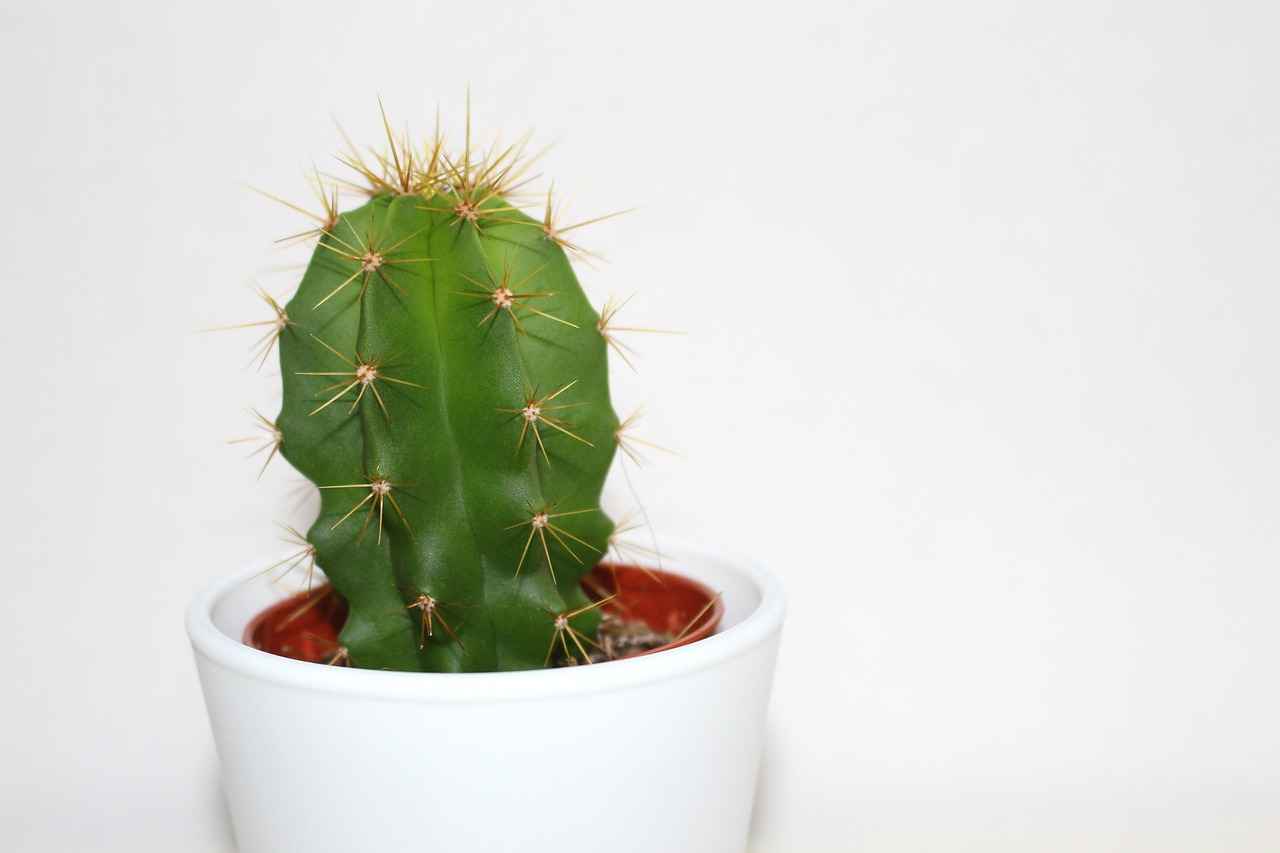
What Are the Benefits of Using Plants as Dividers?
Utilizing plants as room dividers presents a multitude of benefits that go beyond mere aesthetics. This innovative approach not only enhances the visual appeal of your space but also contributes significantly to improving air quality and defining areas within your home. In this article, we will delve into the various advantages of using plants as natural dividers, highlighting their positive impact on both your living environment and overall well-being.
One of the most compelling reasons to use plants as dividers is their ability to purify the air. Many houseplants are known for their air-purifying qualities. According to NASA’s Clean Air Study, certain plants can effectively remove toxins, such as formaldehyde and benzene, from the air. By incorporating these plants into your living space, you can create a healthier environment for you and your family.
Plants naturally bring a sense of vibrancy and life to any space. Using them as dividers adds a touch of nature indoors, creating a calming atmosphere that can reduce stress and improve mood. The lush greenery of plants can transform a stark room into a cozy sanctuary, making it more inviting and visually appealing.
Plants serve as an excellent alternative to traditional room dividers, allowing you to define spaces without the need for permanent structures. This flexibility is particularly beneficial in open-concept homes, where you may want to create separate areas for different activities. By using plants, you can easily delineate spaces for relaxation, work, or socializing, all while maintaining an open feel.
Another often-overlooked benefit of using plants as dividers is their ability to reduce noise. The leaves and stems of plants can absorb and deflect sound waves, helping to create a quieter environment. This is particularly advantageous in busy households or urban settings, where noise can be a significant distraction.
Plants can help to increase humidity levels in your home, which can be particularly beneficial in dry environments. Higher humidity can lead to improved comfort and health for inhabitants, reducing issues such as dry skin and respiratory problems. By strategically placing plants as dividers, you can enhance the overall atmosphere of your space.
Many plants that work well as room dividers are also low maintenance, making them a practical choice for busy individuals. For instance, snake plants and ZZ plants require minimal care while still providing significant benefits. This ease of maintenance ensures that your plants remain healthy and effective as dividers without demanding too much of your time.
Incorporating plants into your home decor is an environmentally friendly choice. By using natural materials and living organisms, you are contributing to a greener planet. Moreover, plants produce oxygen and help to filter out harmful pollutants, making your living space not just more beautiful but also more sustainable.
Plants can be easily rearranged or replaced, allowing for flexibility in your interior design. If you decide to change the layout of your space, you can simply move your plant dividers to suit your new design. This adaptability enables you to refresh your home without the need for significant renovations.
In summary, the benefits of using plants as dividers are numerous and impactful. From improving air quality and aesthetics to providing natural space definition and noise reduction, plants offer a versatile solution for enhancing your living environment. Embracing this green approach not only beautifies your home but also contributes to a healthier and more sustainable lifestyle.

How Can Houseplants Improve Indoor Air Quality?
Indoor air quality is a significant concern for many homeowners, especially as we spend more time indoors. One effective and natural way to enhance the air we breathe is through the use of houseplants. Many houseplants are renowned for their air-purifying qualities, which can help reduce indoor pollutants and create a healthier living environment. This article delves into how houseplants can improve indoor air quality, the specific plants that excel in this role, and the science behind their effectiveness.
Indoor environments often harbor pollutants such as formaldehyde, benzene, and carbon monoxide. These substances can come from various sources, including furniture, cleaning products, and even the air we exhale. Houseplants have been shown to absorb these toxins through their leaves and roots, effectively filtering out harmful substances.
- Spider Plant: Known for its resilience, the spider plant effectively removes formaldehyde and xylene.
- Pothos: This trailing vine is excellent at filtering indoor air and is easy to care for.
- Peace Lily: With its beautiful white blooms, the peace lily is not only aesthetically pleasing but also removes ammonia and benzene.
- Rubber Plant: This robust plant is effective in removing toxins and is perfect for beginners.
- Areca Palm: Known for its ability to humidify the air, the areca palm can also filter out harmful chemicals.
The process of air purification by houseplants involves several mechanisms. Through a process called photosynthesis, plants absorb carbon dioxide and release oxygen, improving air quality. Additionally, plants can absorb volatile organic compounds (VOCs) through their leaves and roots. Once absorbed, these toxins are either stored or transformed into harmless substances. This natural filtration system not only cleans the air but also contributes to a more balanced indoor environment.
The significance of houseplants in improving air quality was highlighted in NASA’s Clean Air Study, which identified specific plants that effectively remove indoor air pollutants. According to the study, incorporating a variety of these plants can lead to a noticeable improvement in indoor air quality. For optimal results, it is recommended to have at least one plant per 100 square feet of living space.
In addition to filtering out toxins, houseplants can also increase humidity levels in your home. This is particularly beneficial in dry climates or during winter months when indoor heating can cause the air to become excessively dry. Plants release moisture vapor through a process called transpiration, which can help alleviate dry skin, respiratory issues, and other discomforts associated with low humidity.
To ensure that your houseplants remain effective air purifiers, proper care is essential. Here are some tips:
- Watering: Ensure that you follow a consistent watering schedule, as overwatering can lead to root rot.
- Light Conditions: Place plants in suitable lighting conditions based on their specific needs; some thrive in bright light, while others prefer low light.
- Fertilizing: Use a balanced fertilizer during the growing season to promote healthy growth.
- Dusting Leaves: Regularly wipe down leaves to remove dust, allowing for better photosynthesis and air purification.
Incorporating houseplants into your home not only enhances the aesthetic appeal but also significantly contributes to improved air quality. By selecting the right plants and providing them with proper care, you can create a healthier living environment that benefits both you and your family. Embrace the natural air purifiers that houseplants offer and enjoy the numerous advantages they bring to your indoor space.
NASA’s Clean Air Study Insights
NASA’s Clean Air Study has significantly influenced our understanding of indoor air quality and the role of houseplants in creating healthier living environments. This groundbreaking research identified several plant species that excel in removing harmful toxins from the air, such as formaldehyde and benzene. These findings have made these plants popular choices for indoor spaces, particularly in homes and offices.
Indoor air can be contaminated with various pollutants, often originating from common household items like furniture, cleaning products, and building materials. The most notable toxins include:
- Formaldehyde: Found in many household products, including adhesives and insulation.
- Benzene: Commonly present in paints, plastics, and rubber products.
- Carbon monoxide: Emitted from gas appliances and vehicles.
- Trichloroethylene: Often used in dry cleaning and paint removers.
Based on NASA’s findings, several plants have proven particularly effective at filtering indoor air pollutants. Here are some of the top contenders:
- Spider Plant: Known for its resilience, it can remove formaldehyde and xylene.
- Pothos: A hardy vine that is effective in removing indoor toxins and is easy to care for.
- Peace Lily: This beautiful plant not only purifies the air but also adds a touch of elegance to any room.
- Rubber Plant: With its large leaves, it effectively removes toxins and is a popular choice for homes.
Plants improve indoor air quality through a process called photosynthesis, where they absorb carbon dioxide and release oxygen. Additionally, many houseplants can absorb harmful chemicals through their leaves and roots, converting them into harmless substances. This natural filtration system helps to create a healthier indoor environment.
Enhanced air quality has numerous benefits, including:
- Reduced respiratory issues: Cleaner air can alleviate symptoms for those with asthma or allergies.
- Improved mood: Studies suggest that indoor plants can boost mood and productivity.
- Better sleep quality: Certain plants, like the peace lily, can promote a more restful sleep by improving air quality.
To maximize the benefits of air-purifying plants, consider the following tips:
- Placement: Position plants in areas where you spend the most time, such as living rooms and bedrooms.
- Variety: Use a mix of different plants to target various toxins.
- Care: Ensure that you understand the specific light and watering needs of each plant to keep them healthy.
While houseplants can significantly improve air quality, they should not be seen as a complete solution. For optimal indoor air quality, it’s essential to also ensure proper ventilation and reduce the sources of indoor pollution. Regular cleaning and maintenance of your living space will complement the air-purifying effects of your plants.
In conclusion, incorporating houseplants identified in NASA’s Clean Air Study into your home not only enhances the aesthetic appeal but also contributes to a healthier indoor environment. By understanding their benefits and how to care for them, you can create a vibrant and inviting space that promotes well-being.
Plants That Boost Humidity
When it comes to creating a comfortable indoor environment, humidity plays a crucial role, especially in regions prone to dryness. Certain houseplants are known to naturally increase humidity levels, making them not only beautiful additions to your home but also beneficial for your health and well-being. This article delves into the types of plants that can boost humidity and the mechanisms behind their effectiveness.
Plants release moisture into the air through a process known as transpiration. As they absorb water through their roots, they release water vapor from their leaves, which contributes to higher humidity levels. This natural process can help mitigate the discomfort caused by dry air, particularly during winter months or in arid climates.
- Boston Fern: Known for its lush, feathery fronds, the Boston fern is an excellent choice for increasing humidity. It thrives in moist environments and can add a touch of greenery to any room.
- Peace Lily: This beautiful flowering plant not only enhances humidity but also purifies the air. Its ability to thrive in low light makes it a popular choice for indoor spaces.
- Spider Plant: A resilient plant that produces “babies,” the spider plant is effective at raising humidity levels and is easy to care for, making it ideal for beginners.
- Areca Palm: This tall, elegant palm is one of the best plants for increasing humidity. It can grow quite large, making it a stunning focal point in any room.
- Rubber Plant: Not only does the rubber plant enhance humidity, but it also helps filter toxins from the air, contributing to a healthier indoor environment.
Increasing humidity through houseplants can lead to several benefits, including:
- Improved Comfort: Adequate humidity levels can make indoor spaces feel warmer in winter and cooler in summer, enhancing overall comfort.
- Health Benefits: Higher humidity can alleviate respiratory issues, reduce dry skin, and minimize the risk of colds and flu.
- Enhanced Plant Growth: Plants thrive in humid environments, which can lead to healthier foliage and more vibrant blooms.
To maximize the humidity benefits from your plants, proper care is essential. Here are some tips:
- Regular Watering: Ensure that your plants receive adequate water, but avoid overwatering, which can lead to root rot.
- Humidity Trays: Place trays filled with water and pebbles beneath your plants to increase local humidity.
- Grouping Plants: Positioning your humidity-boosting plants close together can create a microenvironment of increased moisture.
Strategically placing your plants can enhance their humidity-boosting effects. Consider the following locations:
- Bathrooms: The naturally higher humidity in bathrooms makes them ideal for moisture-loving plants.
- Kitchens: Cooking can generate steam, which can benefit plants while enhancing humidity levels in the area.
- Living Rooms: Positioning plants in common areas where people gather can improve comfort and air quality.
Incorporating humidity-boosting plants into your home not only enhances the aesthetic appeal but also contributes to a healthier living environment. By selecting the right plants and providing proper care, you can enjoy the numerous benefits of increased humidity.
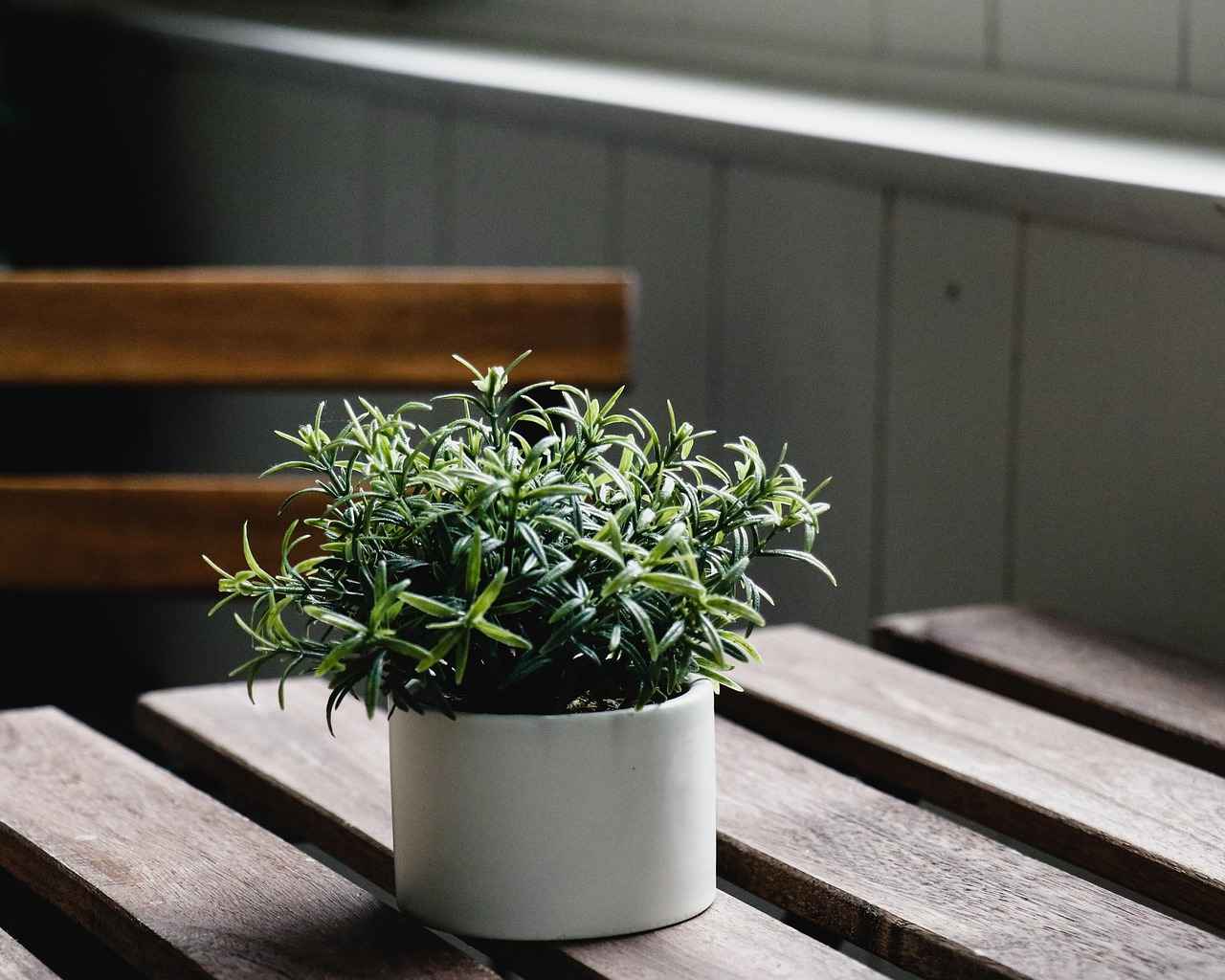
What Maintenance Is Required for Indoor Plants?
Proper maintenance is crucial for the health and longevity of indoor plants, especially when used as natural dividers in your home. Regular care ensures that these plants not only survive but also thrive, enhancing both their aesthetic appeal and functional purpose. Understanding the specific needs of each plant type is essential for successful indoor gardening.
Indoor plants can significantly improve your living space, but they require consistent care to remain healthy. Neglecting their needs can lead to issues such as pest infestations, stunted growth, or even plant death. By committing to a regular maintenance routine, you can enjoy the benefits of vibrant, thriving plants that serve as beautiful dividers in your home.
- Watering: Different plants have varying watering needs. It’s vital to understand how much water your plants require and to check the soil moisture regularly. Overwatering can lead to root rot, while underwatering can cause wilting.
- Fertilizing: Indoor plants benefit from periodic fertilization. Use a balanced fertilizer to provide essential nutrients, especially during the growing season. Be cautious not to over-fertilize, as this can harm the roots.
- Pruning: Regular pruning helps maintain the shape and size of your plants. Remove any dead or yellowing leaves to encourage new growth and improve airflow around the plant.
- Repotting: As plants grow, they may outgrow their containers. Repotting every couple of years into a larger pot with fresh soil can promote healthier growth.
Being proactive about plant health is essential. Look for signs of distress, such as:
- Yellowing Leaves: This may indicate overwatering or nutrient deficiency.
- Wilting: Often a sign of underwatering or root problems.
- Pest Presence: Check for webs, spots, or sticky residue on leaves, which could indicate pest infestations.
Having the right tools can make maintenance more efficient. Some essential tools include:
- Watering Can: A can with a narrow spout allows for precise watering.
- Pruning Shears: Sharp shears are necessary for clean cuts during pruning.
- Moisture Meter: This tool helps you monitor soil moisture levels accurately.
- Fertilizer Spreader: For even distribution of fertilizer.
A maintenance schedule can help keep your plants in top condition. Here’s a general guideline:
- Watering: Check soil moisture weekly.
- Fertilizing: Every 4-6 weeks during the growing season.
- Pruning: As needed, typically every few months.
- Repotting: Every 1-2 years or when root-bound.
By adhering to these maintenance practices, you can ensure your indoor plants remain healthy and vibrant, serving as effective and beautiful room dividers. A well-maintained plant not only enhances the aesthetic appeal of your space but also contributes to a healthier indoor environment.
Watering and Fertilizing Tips
Maintaining healthy houseplants requires a solid understanding of their watering and fertilizing needs. These routines are not just tasks; they are vital components of plant care that significantly impact growth and vitality. In this section, we will explore effective strategies to ensure your plants thrive.
Each plant species has unique watering requirements. Overwatering is a common mistake that can lead to root rot, while underwatering can cause wilting and stress. To avoid these pitfalls, consider the following:
- Check Soil Moisture: Always check the top inch of soil before watering. If it feels dry, it’s time to water.
- Use Well-Draining Soil: Ensure your potting mix allows excess water to escape. This prevents root suffocation.
- Adjust for Seasons: Plants often need less water in the winter when their growth slows down.
Fertilizing is essential for replenishing nutrients that plants absorb from the soil. However, improper fertilization can harm your plants. Here are some tips to consider:
- Choose the Right Fertilizer: Use a balanced fertilizer that contains essential nutrients like nitrogen, phosphorus, and potassium.
- Follow Instructions: Always adhere to the recommended dosage on the fertilizer package to avoid over-fertilization.
- Frequency Matters: Typically, fertilizing every 4-6 weeks during the growing season is sufficient.
Being able to identify the signs of overwatering and underwatering is crucial for plant health:
- Overwatering Signs: Yellowing leaves, wilting despite wet soil, and a foul smell from the soil.
- Underwatering Signs: Dry, crispy leaves, drooping stems, and soil pulling away from the pot edges.
Implementing best practices can enhance your plant care routine:
- Use Room Temperature Water: Cold water can shock plant roots, while room temperature water is more soothing.
- Water Thoroughly: Ensure water reaches the root zone by watering until it drains from the bottom of the pot.
- Use Organic Fertilizers: Organic options can improve soil health over time and are less likely to harm your plants.
Different plants have varied needs. For instance:
- Succulents: Require less frequent watering and thrive in well-draining soil.
- Ferns: Prefer consistently moist soil and higher humidity levels.
- Flowering Plants: May need more frequent fertilization during blooming periods.
In conclusion, understanding the specific watering and fertilizing needs of your houseplants is essential for their health and longevity. By following these tips and adapting your care routine to the unique requirements of each plant, you can create a thriving indoor garden that enhances your living space.
Pruning for Growth and Aesthetics
When it comes to maintaining the health and appearance of your houseplants, pruning is an essential practice that should not be overlooked. Regular pruning helps to ensure that your plants not only maintain their desired shape and size but also thrive as effective dividers in your living space.
Pruning serves multiple purposes. Firstly, it promotes healthy growth by removing dead or diseased branches, which can hinder the overall vitality of the plant. Secondly, it encourages new growth by allowing more sunlight to reach the inner foliage, thus enhancing photosynthesis.
By regularly trimming your houseplants, you can maintain their aesthetic appeal. This is particularly important for plants used as dividers, as their shape can significantly impact the visual flow of a room. A well-pruned plant can fit seamlessly into your decor, providing a natural barrier without appearing overgrown or unruly.
- Use Sharp Tools: Always use clean, sharp pruning shears to make precise cuts. This minimizes damage to the plant and reduces the risk of disease.
- Cut at the Right Angle: Make cuts at a 45-degree angle to promote faster healing and reduce water retention on the cut surface.
- Remove the Right Parts: Focus on cutting back leggy growth, dead leaves, and any branches that cross over each other to maintain a clean appearance.
The best time to prune most houseplants is during their active growing season, typically in the spring and summer months. This timing allows the plants to recover quickly and take advantage of the growing conditions.
While the frequency of pruning can vary depending on the type of plant, a general rule of thumb is to conduct light pruning every few months. More significant pruning may be necessary once or twice a year, depending on the plant’s growth rate and size.
Regular pruning not only keeps your plants looking their best but also enhances their ability to function as natural dividers. A well-pruned plant can create a more defined space, offering privacy and reducing noise while still contributing to a vibrant indoor atmosphere. Furthermore, maintaining a healthy plant through pruning can lead to improved air quality, making your home a healthier place to live.
In conclusion, incorporating a pruning routine into your plant care regimen is vital for maintaining not just the health of your houseplants, but also their effectiveness as room dividers. By understanding the importance of pruning, employing the right techniques, and knowing when to prune, you can ensure that your plants remain beautiful and functional elements of your home.
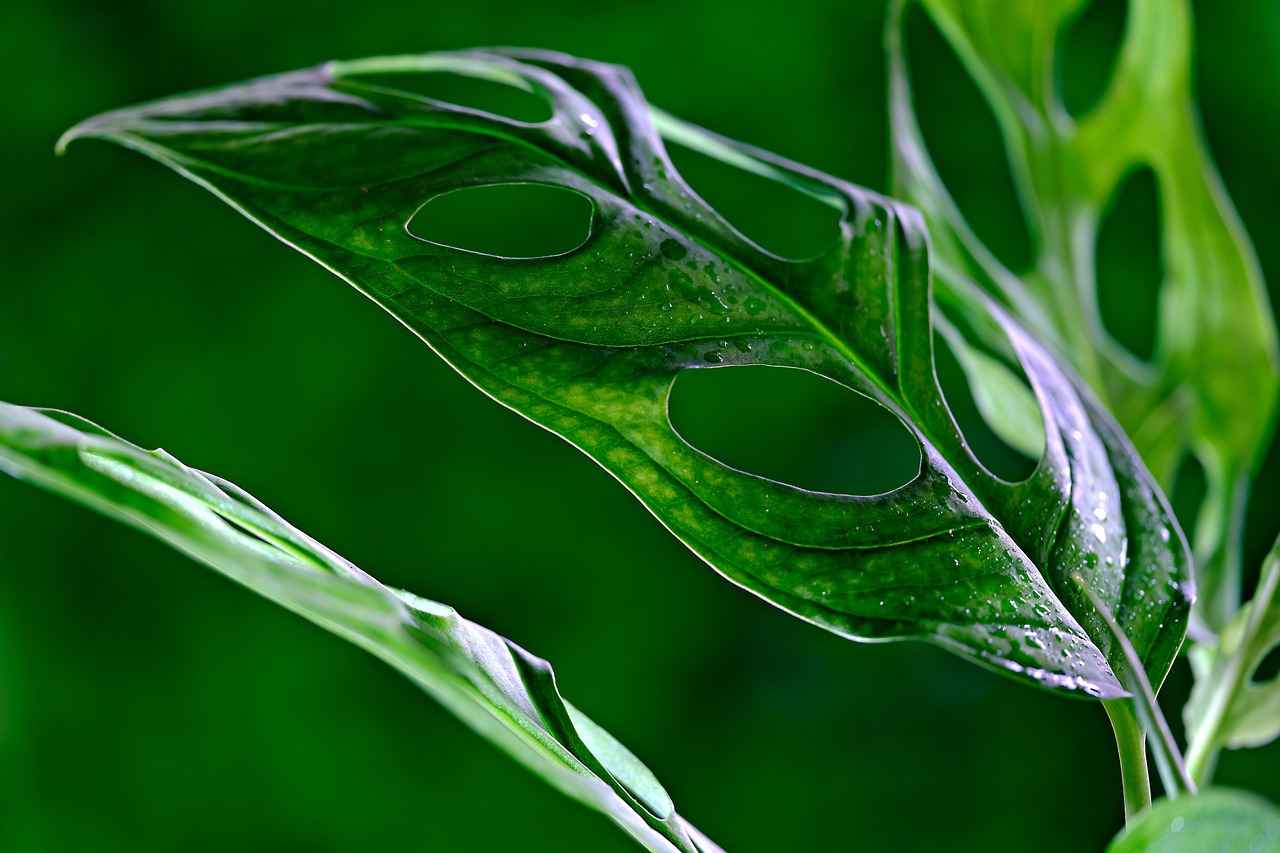
How to Incorporate Plant Dividers in Small Spaces?
In today’s urban living spaces, maximizing every square inch is essential. Houseplants have emerged as a popular solution for creating functional and aesthetically pleasing divisions in smaller areas. They can serve as effective dividers, offering both privacy and visual interest without overwhelming the space. This article will explore how to incorporate plant dividers in compact living environments, enhancing your home’s atmosphere while embracing a greener lifestyle.
Utilizing houseplants as dividers in small areas brings numerous benefits. Firstly, they introduce a touch of nature, which can create a calming environment. Secondly, plants can help define different zones within a room, promoting a sense of separation without the need for physical walls. This is particularly valuable in open-concept spaces where distinct areas for living, working, and relaxing are desired.
When selecting plants for use as dividers, consider their size, growth habits, and light requirements. Here are some excellent options:
- Dracaena Marginata: This tall, slender plant can grow up to 6 feet, making it ideal for creating vertical space without occupying too much floor area.
- Pothos: Known for its trailing vines, Pothos can be placed on shelves or in hanging planters, adding greenery without taking up valuable space.
- Spider Plant: With its arching leaves and ability to adapt to various light conditions, the Spider Plant is perfect for adding a natural divider in small rooms.
Maximizing the impact of plant dividers involves strategic arrangement. Here are some practical tips:
- Layered Heights: Arrange plants of varying heights to create depth. Taller plants can be positioned at the back, while shorter ones fill in the front for a balanced look.
- Grouping for Impact: Cluster several plants together in a corner or along a wall to create a more substantial visual barrier. This approach not only enhances privacy but also adds texture and color.
- Utilizing Shelves: Incorporate multi-tiered plant stands or shelves to display plants at different levels. This not only saves floor space but also creates an eye-catching display.
Hanging planters are an excellent choice for small spaces. They can be suspended from ceilings or walls, drawing the eye upward and creating a sense of openness. By using trailing plants like String of Hearts or English Ivy, you can create a beautiful cascading effect that softens hard edges and adds a natural touch to your decor.
For those who enjoy rearranging their living spaces, consider using mobile plant dividers. Wheeled plant stands allow for easy movement, enabling you to change the layout according to your needs. This flexibility is particularly beneficial in multi-functional rooms where the purpose may shift throughout the day.
Beyond functionality, plant dividers can significantly enhance your home’s aesthetic appeal. By choosing pots and stands that complement your decor, you can create a cohesive look. Consider using textured pots or colorful planters to add visual interest that ties into your overall design theme.
To ensure that your plant dividers remain vibrant and effective, regular maintenance is key. Here are some essential care tips:
- Watering: Be mindful of each plant’s specific watering needs to prevent over or under-watering.
- Fertilizing: Feed your plants with appropriate fertilizers during the growing season to promote healthy growth.
- Pruning: Regularly prune your plants to maintain their shape and encourage bushier growth, enhancing their effectiveness as dividers.
Incorporating houseplants as dividers in small spaces not only optimizes your home’s layout but also brings a refreshing touch of nature indoors. By choosing the right plants and arranging them thoughtfully, you can create a beautiful and functional living environment.
Using Hanging Planters
In the quest for innovative ways to enhance our living spaces, hanging planters have emerged as a stylish and functional solution. They not only add a touch of greenery but also serve as effective vertical barriers, particularly in small rooms where floor space is at a premium. By utilizing the vertical dimensions of a room, hanging planters can create a lush, natural ambiance while providing the benefits of plants without occupying valuable ground area.
Hanging planters are particularly advantageous for small rooms due to their ability to utilize vertical space. This is essential in apartments or cozy homes where every square foot counts. By elevating plants off the ground, you can maintain an open and airy feel while still enjoying the beauty of nature indoors. Moreover, these planters can create distinct areas within a room, offering a sense of privacy without the need for bulky furniture or permanent structures.
When selecting plants for hanging planters, consider those that thrive in various light conditions and have trailing or cascading growth habits. Here are some popular options:
- Spider Plants: Known for their adaptability, spider plants produce long, arching leaves and “babies” that can enhance the visual appeal of your hanging arrangement.
- Pothos: This low-maintenance plant is perfect for beginners and can thrive in low light, making it an excellent choice for hanging planters.
- String of Pearls: With its unique bead-like leaves, this succulent adds a touch of whimsy and is ideal for bright spaces.
The arrangement of hanging planters is crucial for achieving an aesthetically pleasing look. Here are some tips to consider:
- Create Depth: Use planters of varying lengths and sizes to create depth and interest. Taller planters can be hung higher, while smaller ones can be positioned lower.
- Consider Light Needs: Ensure that each plant receives adequate light by positioning them according to their specific requirements. This will promote healthy growth and vibrant foliage.
- Color Coordination: Choose planters that complement your interior decor. This can tie the entire look together and make your hanging garden a focal point.
In addition to their aesthetic appeal, hanging planters offer numerous practical benefits:
- Improved Air Quality: Many houseplants are known for their air-purifying properties, helping to filter out toxins and improve indoor air quality.
- Space Efficiency: By utilizing vertical space, hanging planters allow you to maximize your living area, making them ideal for urban living.
- Enhanced Privacy: Strategically placed hanging planters can create visual barriers, providing a sense of privacy in shared spaces.
To ensure your hanging planters thrive, regular maintenance is essential. Here are some key practices:
- Watering: Be mindful not to overwater, as hanging planters can retain moisture. Check the soil moisture before watering.
- Fertilizing: Use a balanced fertilizer during the growing season to promote healthy growth and vibrant foliage.
- Pruning: Regularly prune your plants to encourage bushier growth and remove any dead or yellowing leaves.
In conclusion, hanging planters are a versatile and attractive option for incorporating greenery into small spaces. They not only enhance the aesthetic appeal of your home but also offer practical benefits like improved air quality and space efficiency. By selecting the right plants and arranging them thoughtfully, you can create a beautiful and functional vertical garden that breathes life into your living environment.
Mobile Plant Dividers
In the world of interior design, flexibility and adaptability are key to creating functional spaces. One innovative approach that has gained popularity is the use of wheeled plant stands as mobile dividers. This method not only enhances the aesthetic appeal of a room but also offers practical solutions for dynamic layouts.
Mobile plant dividers are essentially houseplants placed on wheeled stands that can be easily moved around. This allows homeowners to create temporary partitions in their living spaces, offering a versatile way to redefine areas without the need for permanent structures.
Using wheeled plant stands for room division provides several advantages:
- Flexibility: Easily rearrange plants to suit different occasions or moods.
- Space Optimization: Ideal for small areas where traditional dividers may be impractical.
- Enhanced Aesthetics: Adds greenery and life to your space, improving the overall atmosphere.
When selecting plants for your mobile dividers, consider the following:
- Size and Weight: Opt for lighter plants that are easy to move.
- Growth Habit: Choose plants that can thrive in varying light conditions and won’t outgrow their stands too quickly.
- Maintenance Needs: Select low-maintenance plants to ensure they remain healthy and vibrant.
Here are some excellent choices for plants that work well on wheeled stands:
- Pothos: Known for its trailing vines, Pothos is easy to care for and thrives in various light conditions.
- Spider Plant: This resilient plant is perfect for beginners and adds a touch of greenery with its arching leaves.
- Peace Lily: With its beautiful white blooms, the Peace Lily not only looks great but also purifies the air.
To make the most of your mobile plant dividers, consider the following arrangement tips:
- Layering Heights: Use plants of varying heights to create visual interest. Place taller plants at the back and shorter ones in front.
- Grouping: Grouping plants together can create a stronger visual barrier, making the divider more effective.
- Color Coordination: Choose pots and plants that complement each other for a cohesive look.
The use of mobile plant dividers offers numerous benefits:
- Air Quality Improvement: Many houseplants are known to improve indoor air quality by filtering out toxins.
- Enhanced Privacy: Create cozy nooks in open spaces without the need for permanent walls.
- Dynamic Layouts: Easily change the layout of your room to suit different activities or gatherings.
To keep your mobile plant dividers looking their best, follow these maintenance tips:
- Regular Watering: Ensure each plant receives the appropriate amount of water based on its needs.
- Fertilizing: Use a balanced fertilizer during the growing season to promote healthy growth.
- Pruning: Regularly prune your plants to maintain their shape and encourage new growth.
Incorporating mobile plant dividers into your living space not only enhances its beauty but also offers practical benefits. With the right plants and proper maintenance, you can create a vibrant and flexible environment that adapts to your lifestyle.

Can Houseplants Enhance Your Home’s Aesthetic?
Incorporating plants into your home not only brings a touch of nature indoors but also serves as a powerful design element. Houseplants as dividers can transform spaces, creating a seamless blend of functionality and beauty. This article delves into how plants can enhance your home’s aesthetic, making it more inviting and tranquil.
Houseplants are more than just decorative items; they serve multiple purposes. By acting as natural dividers, they can define spaces without the need for permanent structures. This flexibility allows for a more fluid design, making your home feel larger and less confined. Additionally, plants contribute to improved air quality, which can enhance overall well-being.
When choosing plants to enhance your home’s aesthetic, consider their visual impact and growth patterns. Here are some popular choices:
- Fiddle Leaf Fig: Known for its large, glossy leaves, this plant adds a dramatic touch to any space.
- ZZ Plant: With its waxy, dark green leaves, the ZZ plant is not only stylish but also low-maintenance.
- Rubber Plant: This plant has broad leaves that can create a lush, tropical feel, perfect for larger areas.
The arrangement of plants can significantly influence the visual appeal of your space. Here are some tips:
- Layering Heights: Use plants of varying heights to create depth. Taller plants should be positioned at the back, with shorter ones in front.
- Grouping for Cohesion: Grouping plants of similar colors or textures can create a unified look while maintaining diversity.
- Use of Planters: Choosing stylish pots can elevate the overall aesthetic. Consider materials like ceramic, terracotta, or modern metal finishes.
Plants have a calming effect, making them ideal for creating a peaceful environment. The presence of greenery can reduce stress and promote relaxation. Incorporating plants into your home decor can significantly enhance the overall ambiance, leading to a more inviting atmosphere for both residents and guests.
Plants can serve as a natural color palette for your home. The greens of the leaves can complement various color schemes, while flowering plants can introduce additional hues. Choosing plants with colorful blooms, such as orchids or peace lilies, can add vibrancy and contrast to your decor.
Strategically placing plants in your home can maximize their aesthetic benefits. Consider these locations:
- Entryways: Use tall plants to create a welcoming entrance.
- Living Rooms: Position plants between seating areas to define spaces while maintaining openness.
- Home Offices: A few well-placed plants can create a calming workspace.
In summary, incorporating houseplants as dividers can dramatically enhance your home’s aesthetic, fostering a more inviting and tranquil atmosphere. By selecting the right plants and arranging them thoughtfully, you can create a harmonious and visually appealing environment that reflects your personal style.
Choosing the Right Pots and Stands
When it comes to incorporating houseplants into your home, the choice of pots and stands plays a crucial role in enhancing not only the aesthetic appeal but also the overall atmosphere of your living space. Selecting the right containers can transform your plants from mere greenery to stunning decor elements that elevate your interior design.
Pots and stands are not just functional; they are essential for creating a cohesive look in your home. The right combination can turn your plants into focal points that draw the eye and complement your existing decor. Stylish planters can enhance the visual impact of your plants, making them feel like an integral part of your home rather than an afterthought.
When selecting pots and stands, consider the following styles:
- Modern Minimalist: Clean lines and simple designs can create a sleek, contemporary look.
- Rustic Charm: Terracotta and wooden pots can add a warm, earthy feel to your space.
- Colorful and Bold: Brightly colored pots can serve as statement pieces that add vibrancy to your decor.
- Elegant and Classic: Ceramic or porcelain pots with intricate designs can bring a touch of sophistication.
To achieve a harmonious look, it’s essential to consider the color and texture of your pots. Here are some tips:
- Choose colors that complement your walls or furniture.- Mix textures for a dynamic look; for example, pair smooth ceramic with rough wood.- Consider the size of the pots in relation to the plants and the space they occupy.
Plant stands can significantly affect how your plants are perceived. They can elevate your plants to eye level, making them more visible and engaging. Here are some considerations:
- Height: Varying heights can create visual interest. Use tall stands for larger plants and shorter ones for smaller varieties.
- Material: Metal stands can provide a modern touch, while wooden stands can add warmth.
- Mobility: Consider using wheeled stands for flexibility, allowing you to rearrange your plants as needed.
To achieve a unified aesthetic, consider grouping your plants in similar pots or using a consistent color palette. This approach not only enhances the visual appeal but also makes your space feel more organized. For example, if you have a collection of green plants, using white or neutral pots can create a fresh and clean look. Think about the overall theme of your room and select pots and stands that complement that vision.
If you’re feeling creative, consider DIY options for pots and stands. Upcycling old containers or using materials like wood or metal can add a personal touch to your decor. Not only does this allow for greater customization, but it also promotes sustainability by repurposing items you already own.
In conclusion, the right selection of pots and stands can significantly enhance the beauty of your houseplants, making them not just functional dividers but also stylish decor elements. By considering style, color, texture, and the overall theme of your home, you can create an inviting and harmonious atmosphere that showcases the natural beauty of your indoor greenery.
Color and Texture Considerations
When designing your interior space, the colors and textures of both the plants and their pots play a crucial role in achieving a cohesive and harmonious look. By thoughtfully selecting these elements, you can create an inviting atmosphere that complements your overall interior design theme.
The color palette of your plants and pots can significantly influence the mood of a room. For instance, vibrant green leaves can add a refreshing touch, while colorful flowers can serve as focal points. Here are some key considerations:
- Complementary Colors: Choose pots that complement the dominant colors in your room. For example, if your decor features warm tones, earthy terracotta or deep greens can create a seamless integration.
- Accent and Contrast: Using contrasting colors can draw attention to your plants. A bright yellow pot can stand out against dark furniture, adding a pop of color.
The texture of your pots and the leaves of your plants also contribute to the overall aesthetic. Mixing different textures can create visual interest and depth. Consider the following:
- Smooth vs. Rough: A smooth ceramic pot can contrast beautifully with the rough texture of a succulent or cactus, creating an engaging visual dynamic.
- Natural vs. Man-Made: Incorporating natural materials, such as wicker or wood, can enhance the organic feel of your plants, while sleek metal pots can add a modern touch.
To achieve a harmonious look, it’s important to consider how the colors and textures of your plants and pots interact with your existing decor. Here are some practical tips:
- Monochromatic Schemes: Stick to a single color family for a sophisticated look. For example, various shades of green can create a serene environment.
- Layering Textures: Combine different textures within the same color scheme to add depth without overwhelming the space. For instance, mix matte and glossy finishes in your pots.
Choosing the right combination of plants and pots can significantly enhance your design. Here are some popular pairings:
| Plant Type | Recommended Pot Colors | Texture Suggestions |
|---|---|---|
| Fiddle Leaf Fig | White, Terracotta | Smooth ceramic or matte finish |
| Snake Plant | Black, Gray | Textured stone or metal |
| Succulents | Pastels, Bright Colors | Rough clay or woven baskets |
Incorporating plants into your interior design can be both aesthetically pleasing and functional. By paying attention to the colors and textures of your plants and pots, you can create a space that feels cohesive, inviting, and reflective of your personal style. Whether you prefer a minimalist approach or a vibrant display, the right combination will enhance your living environment and promote a sense of tranquility.
Frequently Asked Questions
- Can any houseplant be used as a room divider?
While many houseplants can serve as dividers, it’s best to choose those that grow tall and bushy. Plants like Ficus trees and Snake plants are excellent choices due to their height and low maintenance needs.
- How do I arrange my plants for the best effect?
For maximum impact, consider layering your plants by height. Place taller plants at the back and shorter ones in front. Grouping plants with similar pots can also create a cohesive look.
- What are the air quality benefits of using houseplants?
Many houseplants are known for their air-purifying qualities, helping to reduce indoor pollutants. Plants like the Peace Lily and Spider Plant can effectively filter toxins, making your space healthier.
- How much maintenance do indoor plants require?
Indoor plants need regular watering, fertilizing, and occasional pruning. Understanding the specific requirements of each plant will help them thrive and maintain their role as effective dividers.
- Can I use plants as dividers in small spaces?
Absolutely! Hanging planters or mobile plant stands can create vertical barriers without taking up floor space, making them perfect for small rooms.
